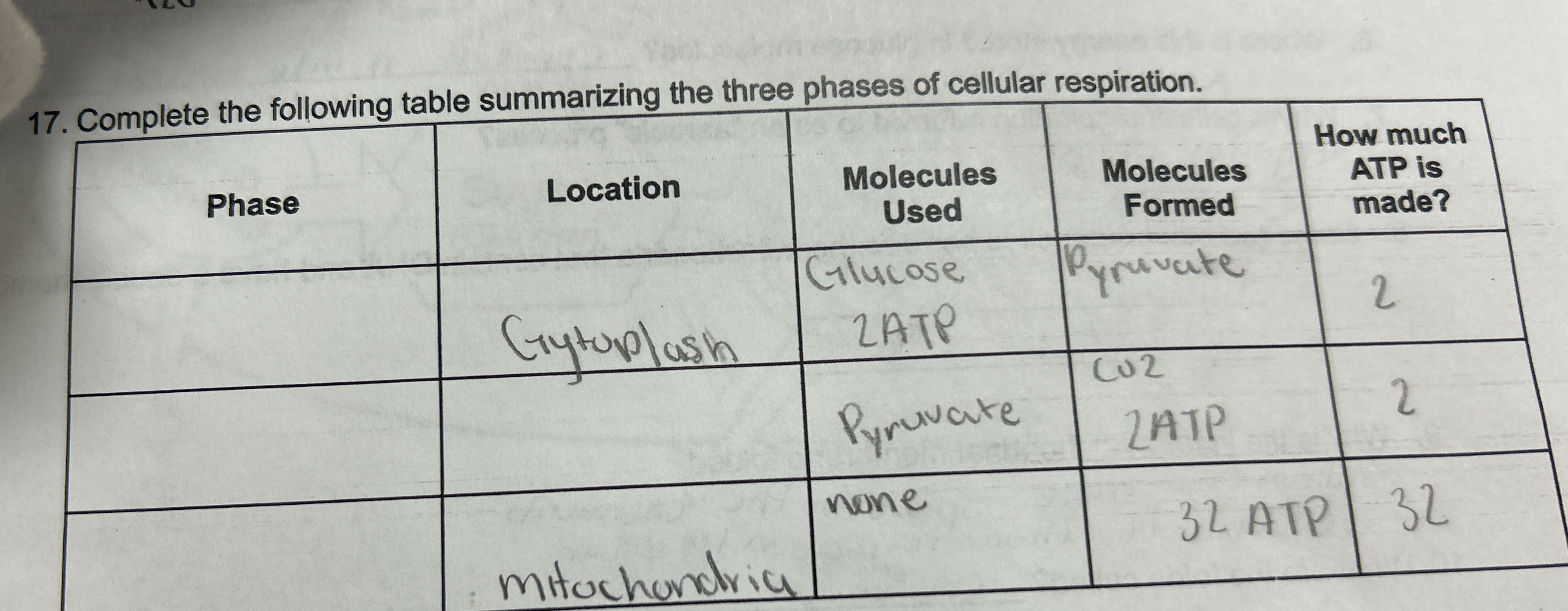Complete the following table summarizing the three phases of cellular respiration.

Understand the Problem
The question is asking to summarize the three phases of cellular respiration in a table format. It includes identifying the phase, location, molecules used, molecules formed, and the amount of ATP produced in each phase.
Answer
Glycolysis (Cytoplasm): 2 ATP | Krebs Cycle (Mito. Matrix): 2 ATP | ETC (Mito. Inner Membrane): 32 ATP
The completed table is:
-
Phase: Glycolysis
- Location: Cytoplasm
- Molecules Used: Glucose
- Molecules Formed: Pyruvate
- ATP Produced: 2
-
Phase: Krebs Cycle (Citric Acid Cycle)
- Location: Mitochondrial Matrix
- Molecules Used: Pyruvate
- Molecules Formed: CO2
- ATP Produced: 2
-
Phase: Electron Transport Chain
- Location: Mitochondrial Inner Membrane
- Molecules Used: None (oxygen acts as the final electron acceptor)
- Molecules Formed: Water
- ATP Produced: 32
Answer for screen readers
The completed table is:
-
Phase: Glycolysis
- Location: Cytoplasm
- Molecules Used: Glucose
- Molecules Formed: Pyruvate
- ATP Produced: 2
-
Phase: Krebs Cycle (Citric Acid Cycle)
- Location: Mitochondrial Matrix
- Molecules Used: Pyruvate
- Molecules Formed: CO2
- ATP Produced: 2
-
Phase: Electron Transport Chain
- Location: Mitochondrial Inner Membrane
- Molecules Used: None (oxygen acts as the final electron acceptor)
- Molecules Formed: Water
- ATP Produced: 32
More Information
The electron transport chain produces the most ATP. Oxygen is crucial as the final electron acceptor.
Tips
Often errors occur in remembering which phase occurs in the mitochondria. Remember: Glycolysis is in the cytoplasm, the rest are in the mitochondria.
Sources
- Steps of cellular respiration | Biology (article) - Khan Academy - khanacademy.org
- Cellular Respiration - Biology LibreTexts - bio.libretexts.org
AI-generated content may contain errors. Please verify critical information